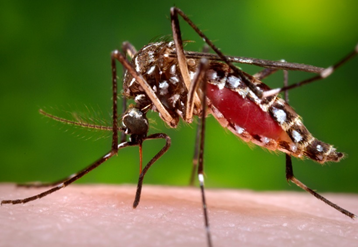The field of study involving Mass Spectrometry Imaging is constantly advancing and expanding, as new applications are being discovered and implemented. A powerful analytical tool, Time-of-Flight Secondary Ion Mass Spectrometry (TOF-SIMS) provides a spectrum of ion mass-to-charge ratios for determining the composition of complex samples in the form of three-dimensional maps. Dr. Anthony Castellanos, a doctoral alumni with the NSF CREST Center for Aquatic Chemistry and Environment (CAChE) uses cutting-edge technology in Mass Spectrometry Imaging to look at subcellular components of organisms.
As part of his dissertation research, he used these advanced detection methods to characterize the contents of a female mosquito’s eggs. This has never been done at such a scale, and has broader implications for efforts to track and prevent the spread of diseases by certain mosquitos. Along with researchers from FIU’s Advanced Mass Spectrometry Facility, Castellanos was able to identify the individual lipid components in ovarian follicles of the Aedes aegypti mosquito, a species of particular concern for its ability to spread diseases. Their team was able to generate high-resolution 3D maps of the ovarian follicles, allowing them to understand the effects of food quality on lipid quantity and egg size. These factors may affect the number of successful insects laid, and could provide useful information to studies on their reproduction.


“We were able to build a 3D map of individual chemical components in the mosquito ovary follicles,” said Castellanos. “Differences between follicles largely depend on nutrient availability, and our study showed for the first time how lipid species are distributed within each follicle. We then found that the accumulation of triacylglyceride lipids in the oocyte region of ovarian follicles was an indicator of fitness.”
As a result of insecticide resistance and increased survival, new approaches are necessary to gain a better understanding of how changes to mosquito feeding can impact reproduction. This knowledge can then inform and guide new strategies to reduce mosquito populations.
The NSF CREST Center for Aquatic Chemistry and Environment (CAChE) is housed within the Institute of Environment, a Preeminent Program at Florida International University.
